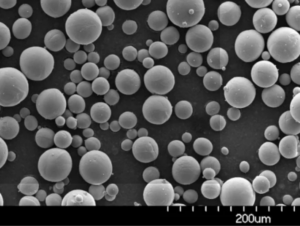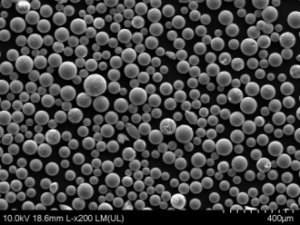概要
スラム選択的レーザー溶融(Selective Laser Melting)の略で、レーザーを使用して金属粉末材料を選択的に溶融し、層ごとに融合させて3Dパーツを造形する積層造形プロセスである。現在、最も一般的に使用されている金属3Dプリンティング技術の1つである。
SLM機器について知っておくべきいくつかの重要なこと:
- ステンレス鋼、チタン、アルミニウム、ニッケル合金など、さまざまな金属に対応
- 高出力レーザーを使用して、粉末ベッド内の金属粉末粒子を選択的に溶融する。
- 粉末の薄い層を広げ、レーザーを走査して断面を溶かすことにより、パーツを層ごとに構築する
- 従来の製造に匹敵する機械的特性を持つ、完全に緻密な金属部品を製造
- 従来のサブトラクティブ法では不可能だった複雑な形状が可能
- 小ロット生産、カスタマイズ部品、ラピッドプロトタイピングに最適
- slmマシンは、レーザー、スキャナーシステム、パウダーベッド、リコーター機構などで構成されている。
このガイドでは、作業、種類、用途、仕様、サプライヤー、設置、操作、メンテナンスなどを網羅し、slm装置の包括的な概要を説明します。選択的レーザー溶融装置の世界を探求してみましょう!
slm 機器の種類
様々なメーカーから、いくつかのカテゴリーとタイプのslm機器が販売されている。以下はその比較である:
| 設備タイプ | ビルド・サイズ | レーザータイプ | 主な特徴 |
|---|---|---|---|
| デスクトップslm | 50-150 mm | 繊維、CO2 | コンパクトサイズ、低コスト、研究開発、小型部品 |
| ベンチトップslm | 150-300 mm | 繊維、CO2 | 製造量は多く、コストは中程度 |
| 工業用SLM | 300-500 mm | 繊維、CO2 | 高い生産能力、自動化された生産 |
| 大判SLM | 500mm以上 | 繊維 | 大型部品、高生産性 |
slmマシンのタイプを差別化する主な要因には、以下のようなものがある:
- ビルド・ボリューム 印刷可能な最大部品サイズ。デスクトップ用の数cmから大型システム用の1mまで。
- レーザー式 ファイバーレーザーの方が加工が速い。CO2レーザは低コストです。
- オートメーション 産業用システムは、より高度な自動化と制御が可能です。
- 不活性ガスの使用 大型機では不活性アルゴンガスを使用することが多く、小型機では空気を使用する。
- 価格 – 卓上型と卓上型は、容量が小さくなる分、コストが下がる。
まとめると、卓上型やベンチトップ型の slm 機器はプロトタイピングや研究開 発に適しており、産業用や大型のシステムは大量生産用 に設計されている。製造サイズ、価格、品質ニーズ、その他の要件を考慮した上で、SLM機のタイプをお選びください。
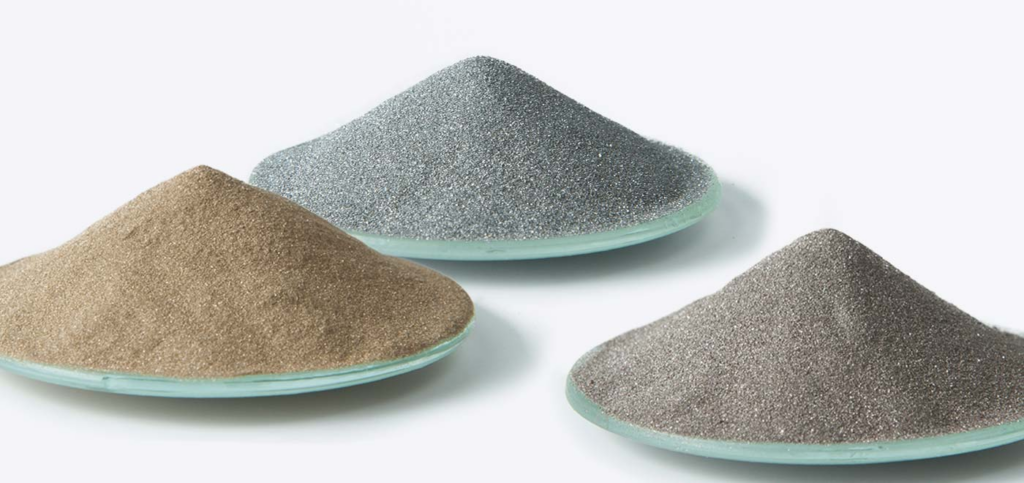
slm 機器部品
slmマシンは、付加製造プロセスを可能にするために連携するいくつかの主要なサブシステムとコンポーネントで構成されています。以下に主要コンポーネントを紹介する:
| コンポーネント | 説明 |
|---|---|
| レーザー | 粉体原料を選択的に溶融させるために、集中的な熱エネルギーを提供します。 |
| スキャンシステム | レーザービームを正確に制御し、位置決めする |
| パウダーベッド | 金属粉末層を保持し広げる |
| レコーター | フレッシュパウダーをビルドエリアに散布し、均す。 |
| パウダーデリバリー | カートリッジ/容器から新しいパウダーを供給 |
| ビルドプレート | 層が積み重なるにつれて印刷された部分を保持する |
| 不活性ガス流量 | アルゴンまたは窒素ガスの保護雰囲気 |
| コンピューター | ハードウェアの制御、ビルドファイルの実行 |
| チラー | レーザーと高感度光学部品を冷却 |
| フィルター | 余分な粉や粒子を捕捉 |
レーザーは最も重要なコンポーネントのひとつである。slm機は通常、100~1000ワットの出力レベルのファイバーレーザー(イッテルビウムドープ)またはCO2レーザーを使用する。レーザースキャニングシステムは、レーザービームをパウダーベッド表面に照射し、各層の断面をスキャンします。
その他の主なハードウェアには、原料粉末を保持するパウダーベッド、新しい粉末層を広げるリコーター、不活性ガスフローシステム、各種センサーなどがある。統合制御ソフトウエアは、CADデータをレイヤーごとに装置が追従するための指示に変換する。
slm 装置仕様
slmマシンは、さまざまな技術仕様や性能パラメーターによって比較することができる。ここでは、slmシステムに関して考慮すべき主な仕様を紹介する:
| 仕様 | 典型的な範囲 |
|---|---|
| ビルド・ボリューム | 50mm – エッジ長 500mm |
| レイヤーの厚さ | 20-100ミクロン |
| レーザー出力 | 100-1000W |
| スキャン速度 | 最大10 m/s |
| ビームサイズ | 50~100ミクロン |
| パウダー素材 | ステンレス、チタン、Ni合金、Al合金、その他 |
| 対応素材 | ほとんどの溶接可能な合金 |
| 精密 | ±0.1~0.2%の寸法精度 |
| 表面仕上げ | 最大15ミクロンの粗さ |
不活性ガスの消耗品使用量、フィルタリングシステムの有効性、ソフトウェア機能など、その他の要因も、slm装置のモデルや性能に差をつけます。一般的に、産業用システムはデスクトップ型と比較して、造形量が大きく、レーザー出力が高く、スキャン速度が速く、プロセス制御が優れている。
slm 機器設計の考慮点
slmマシンには、光学、機械、電子、ソフトウェアシステムにわたる精密な設計とエンジニアリングが含まれます。重要な設計要素には次のようなものがあります:
- レーザー光学 – 正確なレーザー・ステアリングとスポット・サイジングのための、よく構成されたガルボ/ミラー・システム。
- パウダーハンドリング – ジャミングを最小限に抑え、スムーズなパウダーフローを確保します。
- ガス流量 – 粉末床を横切る層流の管理。
- ビルドプレート – 繰り返される高温に耐える。
- コントロール – 正確にモニタリングし、リアルタイムでパラメータを調整します。
- フィルター – ミクロンスケールの金属粒子と粉末を捕捉。
- 汚染防止 – 繊細な光学部品を清潔に保つ。
- キャリブレーション 運転中のアライメントとキャリブレーションの維持。
- 自動化対応 – マテリアルハンドリングシステムの統合を可能にします。
生産環境において再現性のある高品質な製造を実現するためには、入念なslm装置設計が必要である。大手メーカーは、より良いプロセス制御のために、ハードウェアとソフトウェアを改良し続けています。
slm 機器サプライヤー
slm機器ソリューションを製造・提供する企業は多岐にわたる。ここでは主なサプライヤーをいくつか紹介する:
| サプライヤー | 機材ブランド/モデル |
|---|---|
| イーオーエス | EOS Mシリーズ、EOS Pシリーズ |
| SLMソリューション | SLM®125、SLM®280、SLM®500、SLM®800 |
| GEアディティブ | コンセプトレーザーM2、MLine、XLine 500R |
| 3Dシステムズ | ProX® DMP 100、200、300、320 |
| トランプ | TruPrint 1000、3000、5000 |
| レニショー | RenAM 500Q、RenAM 500M |
| シスマ | シスマ Mysint100、Mysint300 |
加えて、より手頃な価格のデスクトップ用SLM機器を提供するアジアのサプライヤーも増えている:
- ファルスーン
- より長い3D
- レイチャム
- ワイブックス
- クリーリティ
slm装置サプライヤーを選択する際、重要視され るのは、製造品質、信頼性、サービス、カスタマーサ ポート、粉体ハンドリング機能、ソフトウェア機能、 価格設定、過去のユーザー経験などである。主要なOEMメーカーは、実績のある技術と性能を提供する傾向があります。
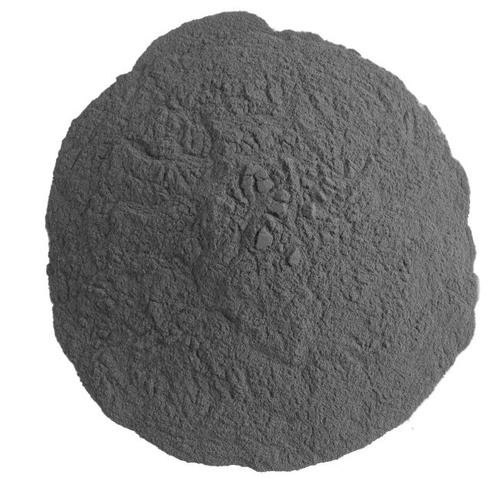
slm機器価格
slm機器の価格は、製造量、機能、製造業者によってかなり幅があります。以下は、典型的な価格帯の概要です:
| slm 機器タイプ | おおよそのコスト範囲 |
|---|---|
| デスクトップslm | $50,000 – $150,000 |
| ベンチトップslm | $150,000 – $300,000 |
| 工業用SLM | $300,000 – $1,000,000 |
| 大判SLM | $1,000,000+ |
一般に、相手先商標製品メーカーの工業用SLMシステムは、30万ドルから100万ドルの間である。より大きなビルド・エンベロープ、より高出力のレーザー、より高度な自動化により、価格は上昇する。
アジアのサプライヤーによる手頃なデスクトップ・モデルは、100,000円以下で入手できる。その多くは、高価格の機器と同様の機能を提供するが、信頼性、性能、サービスに欠ける場合がある。
総費用には、金属粉、フィルター、ガス供給、メンテナンス、修理、スペアパーツなどの継続的な運転コストも含まれ、これらは相当な額になる可能性がある。機器の購入コストと運転コストの両方を考慮する必要がある。
slm機器設置
slmの機器を適切に設置することで、安全で最適な運転を確保することができます。主な設置手順は以下の通りです:
- 機械の構成部品を注意深く開梱し、損傷がないことを確認してください。
- 頑丈なフレームやテーブルの上に置き、振動を最小限に抑える。
- 水平なプラットフォームを正確に構築する。
- チラー、ガス供給、換気ダクトを接続する。
- 排煙装置/フィルターを設置する。
- 電源を接続する。
- すべての光学部品とレーザーパスを取り付け、校正する。
- リコーター、パウダーシステムのテストモーション。
- 監視センサーを統合する。
- クローズドループの粉体処理システムを確立する。
- 機械の設定を初期化し、較正する。
- サンプルテストを実施し、品質を検証する。
スペース、電源、安定した温度/湿度、換気、危険物取扱能力など、十分な設備準備も必要である。設置は通常、機器メーカーの担当者が行う。
slm 装置の操作
slmマシンの操作には、注意深い監督、システム監視、標準プロトコル、そしてビルドの検証が必要である。以下に、主な操作手順を示す:
- 3D CADモデルをスライサーソフトウェアにインポートし、準備する。
- プロセスパラメーターを選択し、ビルドファイルを生成する。
- 金属粉をふるい分け、システムに投入する。
- ビルドプレートを選択し、取り付ける。
- レイヤーの厚さ、レーザー出力、速度などを調整する。
- 不活性ガスフローを開始し、パウダーベッドを予熱する。
- 第1層の粉末散布とレーザースキャンを開始する。
- 温度、粉体レベル、ガス流量を定期的に監視する。
- レイヤーを完成させる。
- 完成したらビルドプレートを取り外し、部品を回収する。
- ブラスト技術を使って余分な粉を取り除く。
- アニール、機械加工など、必要に応じて部品の後処理を行う。
制御される重要なプロセス・パラメーターには、レーザー出力、スキャン・パターン、スキャン速度、ハッチ間隔、層厚、予熱温度などがある。リアルタイムのモニタリングと調整が必要な場合が多い。
呼吸器や目の保護のための安全装備と、危険なパワーのトレーニングが義務付けられている。部品はまた、必要な材料特性を確認するための検証テストも受ける。
slm 機器メンテナンス
定期的な予防メンテナンスは、稼働時間とパフォーマンスを最大化するのに役立ちます。メンテナンス作業には以下が含まれます:
- クリーニング – 光学系、レーザー経路、センサーに汚れやゴミがないようにする。
- 校正 – センサー、レーザー、光学系の再調整および校正。
- フィルター交換 – エアフィルターとパウダーフィルターを定期的に交換する。
- リコーターブレードの潤滑 / 交換、ギャップの調整。
- レーザー – ビーム品質をモニターし、共振器のアライメントを調整する。
- モーション – リニアステージの潤滑、摩耗したコンポーネントの交換。
- パウダー – ダマになったり固まったりしないよう、余分なパウダーは定期的に捨ててください。
- 安全点検 – ガス検知器、アラーム、センサーの状態を確認する。
- ファームウェア – ベンダーからソフトウェアとファームウェアのアップデートをインストールする。
メーカーが提供するメンテナンスマニュアルには、毎日、毎週、毎月の推奨メンテナンスのスケジュールが詳細に記載されている。フィルターやリコーターブレードのような消耗部品は、定期的な交換が必要である。メンテナンス契約を結べば、定期的な予防サービスが受けられる。
slm 装置の用途
slmテクノロジーは、さまざまな業界のさまざまな用途に適しています。代表的なアプリケーションをいくつか紹介しよう:
航空宇宙 タービンブレード、構造用ブラケット、ロケットノズル
メディカル 整形外科用インプラント、補綴物、手術器具
自動車 部品の軽量化、カスタムツーリング
インダストリアル 熱交換器、流体処理部品
ディフェンス 銃器、装甲部品
ジュエリー カスタマイズされた貴金属ジュエリー
このような用途におけるslmの主な利点には、アセンブリの1部品への統合、軽量化、複雑な冷却チャンネル、自由形状、迅速なターンアラウンドなどがあります。
slmの高精度、小形、優れた機械的特性は、軽量で最適化された、あらゆる分野のカスタム部品の製造に理想的です。
slm機器サプライヤーの選び方
適切なslm機器とサプライヤーを選択することは重要な決断です。ここでは、slmサプライヤーを選択する際の主な考慮事項を説明します:
- ビルド・クオリティ – サンプル部品を評価し、良好な密度、特性、精度を確認する。
- 信頼性 – 故障の間隔と寿命に関する現場データを求める。
- テクニカルサポート レスポンスタイムとサポートインフラを評価する。
- 保証 – ハードウェア、光学部品などの保証条件を確認する。
- トレーニング – 運転および保守のトレーニングの有無を確認する。
- 素材範囲 – 利用可能なパウダー素材と品質を検討する。
- ソフトウェア – 内蔵ソフトウェアの機能と使いやすさを調べる。
- 地域的プレゼンス 現地のアプリケーション・エンジニアの可用性を判断する。
- サービス契約 販売後の保守契約とSLAを比較する。
- 価格 – 購入コスト、TCO、パフォーマンス価値のバランス。
製造仕様、価格帯、リスク許容度に基づいて候補を絞り込む。最終的な購入を決定する前に、機器のデモを予定し、潜在的なサプライヤーのサンプル部品の品質を直接評価する。
slmと他の金属3Dプリントプロセスとの比較
slmは、それぞれ独自のプロファイルを持ついくつかの金属積層造形技術のひとつです。以下は、slmの比較です:
| プロセス | 長所 | 短所 |
|---|---|---|
| 選択的レーザー溶融(slm) | 優れた特性、高精度、ほとんどの合金 | 低速、高コスト、残留応力 |
| ダイレクトメタルレーザー焼結(DMLS) | 優れた材料特性、低コスト | 一部の合金における気孔率の問題 |
| 電子ビーム溶解(EBM) | 優れた構造特性、完全密度に近い | 対応合金が少なく、精度は中程度 |
| 指向性エネルギー蒸着(DED) | 大型部品、金属蒸着、修理 | 低解像度、高コスト |
主な違い
- slmは、より広い範囲の合金で、完全に高密度でボイドのない構造体を製造するが、造形速度は低い。
- DMLSの粉末は焼結しているのに対し、完全に溶融しているため、材料の性能が制限される。
- EBMは真空を必要とし、対応する合金の数は少ないが、優れた材料特性を発揮する。
- DEDは精度が低いが、大規模な金属蒸着アプリケーションをサポートする。
ほとんどの高価値生産部品では、slmが優れた材料特性を提供します。しかし、大きな修理や単純な形状の場合は、DEDやDMLSの方が費用対効果が高くなります。
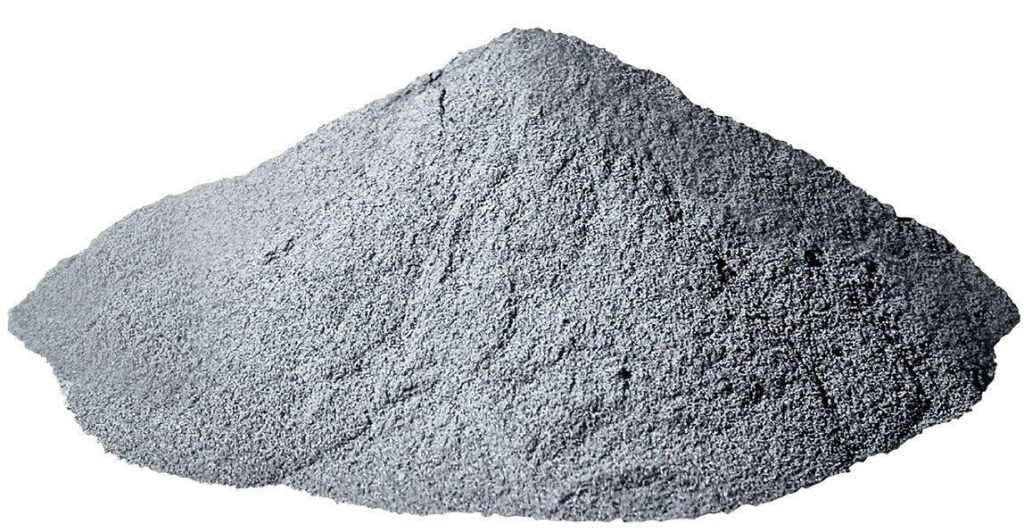
slmの利点と限界
他のテクノロジーと同様、slmにも考慮すべき利点と限界がある:
メリット
- 高い寸法精度と微細な表面仕上げ
- 製造期間中、優れた機械的特性が維持される
- 複雑な形状と軽量構造が可能
- 連結部品およびアセンブリ
- デザイン反復のための迅速なターンアラウンド
- カスタマイズされた形状、機能、デザイン
制限事項
- 小さなビルド・エンベロープが部品サイズを制限
- 比較的遅い生産速度
- 限られた素材に対応 – 主に金属
- 多くの場合、かなりの後処理が必要
- 残留応力は変形の原因となる
- 高い設備費と材料費
アプリケーションの要件を理解し、プロセスのトレードオフを比較して、slmが最適なAMプロセスであるかどうかを判断する。
よくある質問
slmの機材に関するよくあるご質問にお答えします:
Q: slmで加工できる金属は何ですか?
A: ステンレス鋼、チタン、ニッケル合金、アルミニウム、工具鋼など、溶接可能な合金のほとんど。新しい材料は常に検証されています。
Q: SLMマシンの一般的なレイヤー解像度は?
A: 層厚は20ミクロンから100ミクロンで、50ミクロンが一般的です。層が細かいほど表面の仕上がりは良くなりますが、加工時間も長くなります。
Q: slmではどのくらいの大きさの部品を作ることができますか?
A: デスクトップ・システムでは100-150mmまでのビルドに対応していますが、産業用SLMマシンでは500mm以上のビルドが可能です。
Q: slm印刷の後、どのような工程が必要ですか?
A: 後処理には、サポート除去、メディアブラスト、アニール、機械加工、研磨、表面処理などが含まれます。
Q: どのような精度と表面仕上げが得られますか?
A: 寸法精度は±0.1~0.2%で、表面粗さは15ミクロン程度です。
Q:運転にはどのような安全上の注意が必要ですか?
A: 防毒マスク、保護メガネ、手袋を含む適切なPPE、および危険物取扱訓練。適切な換気と安全な粉体の取り扱いが重要である。
Q: slm機にはどのようなメンテナンスが必要ですか?
A: 定期的なメンテナンスには、光学部品やレーザーのクリーニング、フィルター交換、パウダーの廃棄、潤滑、キャリブレーション、ファームウェアのアップグレードなどが含まれます。
Q: slmマシンのビルドジョブのセットアップにはどれくらいの時間がかかりますか?
A: CADモデルを準備し、パーツの向きを決め、パラメーターを設定し、スライス時間を設定すると、造形を開始する時間は30分から数時間になります。
結論
slmは、高密度で高性能な金属部品製造のための革新的な機能を提供します。さまざまな装置の種類、動作原理、仕様、用途、利点を理解することで、この技術を効果的に活用することができる。機械、材料、ソフトウエア、プロセス制御の絶え間ない進歩により、slmは従来の製造に対してさらに競争力を増すことが期待される。
Additional FAQs on slm Equipment
1) What powder specifications are critical for stable slm builds?
Spherical morphology, PSD D10–D90 ≈ 15–45 μm (material dependent), low interstitials (O/N/H), high flowability (Hall/Carney), consistent apparent/tap density, and minimal satellites per ISO/ASTM 52907.
2) How do multi-laser slm systems coordinate scan fields without defects?
They use advanced tiling/overlap strategies, laser synchronization, and shared calibration to prevent stitch lines and ensure uniform energy density across the full build.
3) What are effective strategies to reduce residual stress and distortion?
Use platform preheat (e.g., 80–200°C), thin layers, optimized hatch rotations, contour-first strategies, robust support design, and post-build stress relief or HIP when required.
4) How should powder reuse be managed on slm equipment?
Adopt closed-loop sieving, track powder genealogy, apply blend-back limits (e.g., 20–50% recycled), and test O/N/H, PSD, and flow routinely; retire powder when out of spec.
5) Which alloys are challenging on slm and why?
High-reflectivity Cu/Al grades and crack‑prone Ni superalloys can suffer lack‑of‑fusion or fissuring; wavelength-optimized lasers, tailored scan strategies, and preheat mitigate risks.
2025 Industry Trends for slm
- Multi-laser normalization: 8–12 laser machines with smarter tiling deliver 20–40% faster cycle times.
- In‑situ acceptance: Melt‑pool/coaxial cameras tied to part acceptance reduce CT burden for well‑characterized geometries.
- Copper- and aluminum‑ready platforms: Blue/green lasers expand material portfolio beyond traditional steels/Ti/Ni.
- Sustainability and safety: Argon recirculation, closed powder loops, and NFPA 484‑aligned rooms become standard in production.
- MES integration: Material passports linking powder lots to serial numbers for traceability and qualification.
| 2025 Metric (slm Equipment/Process) | Typical Range/Value | Why it matters | ソース |
|---|---|---|---|
| LPBF relative density (post‑HIP, common alloys) | 99.5–99.9% | Production-grade integrity | Peer-reviewed AM studies; OEM notes |
| Build rate (12‑laser, 40 μm layers) | 35–70 cm³/h per system | Lowers cost per part | OEM application notes |
| Typical PSD for slm powders | D10–D90 ≈ 15–45 μm | Recoating stability | ISO/ASTM 52907 |
| Oxygen spec (Ti‑6Al‑4V ELI) | ≤0.13 wt% O | Ductility/biocompatibility | ASTM F136/F3001 |
| Indicative machine uptime (with PM) | 75–90% | Planning and ROI | Industry benchmarks |
| AM‑grade powder pricing range | ~$20–$500/kg | Budgeting and sourcing | Supplier quotes/trackers |
Authoritative references and further reading:
- ISO/ASTM 52907 (AM feedstock), 52910 (DFAM), 52931 (LB‑PBF metals): https://www.astm.org and https://www.iso.org
- NFPA 484 (combustible metals safety): https://www.nfpa.org
- NIST AM Bench and datasets: https://www.nist.gov
- ASM Handbook (Powder Metallurgy; Materials Systems): https://www.asminternational.org
Latest Research Cases
Case Study 1: Scaling Multi‑Laser slm for Stainless Lattice Heat Exchangers (2025)
Background: An industrial OEM needed to cut cycle time on 316L lattice heat exchangers while maintaining pressure integrity.
Solution: Deployed a 12‑laser slm system with coordinated tiling, in‑situ melt‑pool monitoring, and automated powder genealogy; post‑HIP and passivation.
Results: 29% cycle time reduction; >99.8% density post‑HIP; 30% reduction in CT usage on validated sections; 15% lower pressure drop at constant duty.
Case Study 2: slm of Cu‑Cr‑Zr Thermal Plates Using Blue Lasers (2024)
Background: An e‑mobility supplier required high‑conductivity cold plates with tight flatness after thermal cycling.
Solution: Spherical Cu‑Cr‑Zr powder (15–45 μm) printed on blue‑laser slm with platform preheat, optimized contour/hatch; HIP + aging; Ni flash on sealing lands.
Results: Conductivity 80–85% IACS; flatness within 30 μm after 1,000 cycles (−40 to 150°C); 18% cost reduction vs. machined baseline.
Expert Opinions
- Prof. John Hart, Professor of Mechanical Engineering, MIT
Key viewpoint: “Linking in‑situ sensing with material passports is enabling defensible acceptance criteria for serial slm production.” - Dr. Laura Schmidt, Head of Additive Manufacturing, Fraunhofer IAPT
Key viewpoint: “Multi‑laser coordination and wavelength‑optimized optics are expanding slm into copper and high‑productivity applications without compromising quality.” - Dr. Brent Stucker, AM standards contributor and industry executive
Key viewpoint: “Hybrid flows—slm preforms plus HIP/forging—achieve wrought‑like properties where needed while keeping AM design freedom.”
Citations for expert profiles:
- MIT: https://meche.mit.edu
- Fraunhofer IAPT: https://www.iapt.fraunhofer.de
- ASTM AM Center of Excellence: https://amcoe.org
Practical Tools and Resources
- Standards and qualification
- ISO/ASTM 52907, 52910, 52931; ASTM E1441 (CT best practices); NFPA 484
- Powder QC and monitoring
- LECO O/N/H analyzers: https://www.leco.com
- Laser diffraction/SEM (e.g., Malvern, accredited labs)
- Inline O2/moisture sensors for chambers
- Design and simulation
- Ansys Additive/Mechanical; Simufact Additive; nTopology for supports/lattices
- Market and data
- Senvol Database (machines/materials): https://senvol.com/database
- USGS Mineral Commodity Summaries: https://pubs.usgs.gov/periodicals/mcs
- NIST AM Bench datasets: https://www.nist.gov
Last updated: 2025-08-21
Changelog: Added 5 focused FAQs, a 2025 trends table with metrics and sources, two recent slm case studies, expert viewpoints with citations, and curated tools/resources.
Next review date & triggers: 2026-02-01 or earlier if ISO/ASTM standards update, major OEMs release new multi‑laser coordination or blue‑laser slm platforms, or powder pricing/availability shifts >10% QoQ.
